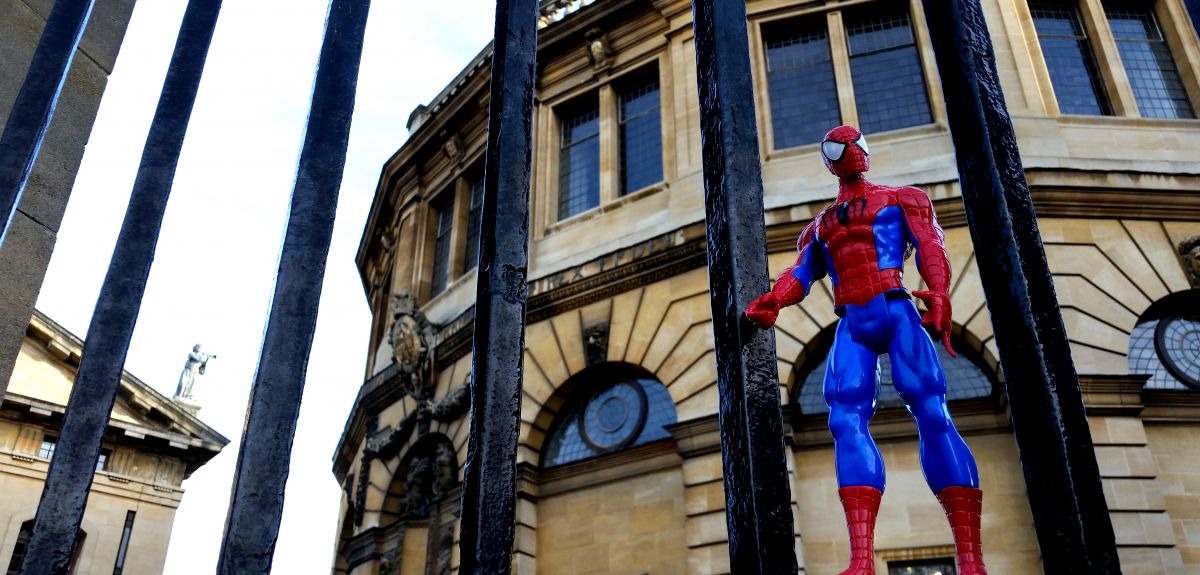
Image credit: Oxford University
Spider-sense or nonsense?
We marvel at their exploits in comic books and on the big screen – but how many of our favourite superheroes' skills and powers have a basis in science?
In a special 'on-screen' edition of The Biochemist, the Biochemical Society's magazine, Professor Fritz Vollrath of Oxford's Department of Zoology attempts to separate the fact from the fiction and explain the mysteries behind the amazing adventures of Spider-Man.
Professor Vollrath, whose research team specialises in the properties of spider silk, writes: 'Seeing Spider-Man swing through New York City tingles the spine and exercises the brain. His ease in making and manipulating gossamer filaments for aerial stunts is truly breath-taking and awe inspiring – which, for materials biologists with decades of experience analysing the stuff, is humbling, to say the least, as totally unforeseen and novel capabilities and capacities emerge.'
Professor Vollrath begins his investigation by explaining the scientific context for Spider-Man's impressive powers, noting that the use of silks by arthropods began approximately 400 million years ago and has undergone significant evolution since then.
Puzzled and impressed by Spider-Man's ability to manufacture vast quantities of silk in the blink of an eye, Professor Vollrath states: 'In-depth analysis of an extensive online database of video imagery, as well as background visual literature (commonly called comic strips), confirms that Spider-Man seems to shoot filaments from the wrist. This immediately raises a number of questions. Firstly, where are the silk glands situated?'
This question is tackled during the course of the article, along with other mysteries such as the immense strength of Spider-Man's silk – as demonstrated in the film Spider-Man 2, in which he uses his web to stop a runaway train.
Professor Vollrath adds: 'It is important to note that Spider-Man, like spiders, has bilateral symmetry – and, in consequence, the ability to produce a double thread. However, unlike spiders, which always produce a double thread (each with the ability to singly hold the animal's weight, as an extra safety feature), Spider-Man more often than not shoots only from one wrist. This behaviour, to me, appears to be highly cavalier.'
And, says Professor Vollrath, Spider-Man's novel technology could have important applications to human industry: 'Unlike spiders, Spider-Man has mutated (or evolved in the relatively short time span of one generation) a spinning system unlike any other found in his spidery lineage.
'This could be important, since Spider-Man's way seems most energy efficient – probably even more so than natural silk spinning, which in itself is 1,000 times more efficient than man's spinning of high-density polyethylene (HDPE).'
It's an impressive set of skills – but, as Professor Vollrath concludes, we may never know the truth: 'I don't think my group will attempt to secure the funding to collect a Spider-Man specimen for study. Instead, we will have to continue to rely for our research on second and third-hand reports and films – which may, of course, have been doctored.'